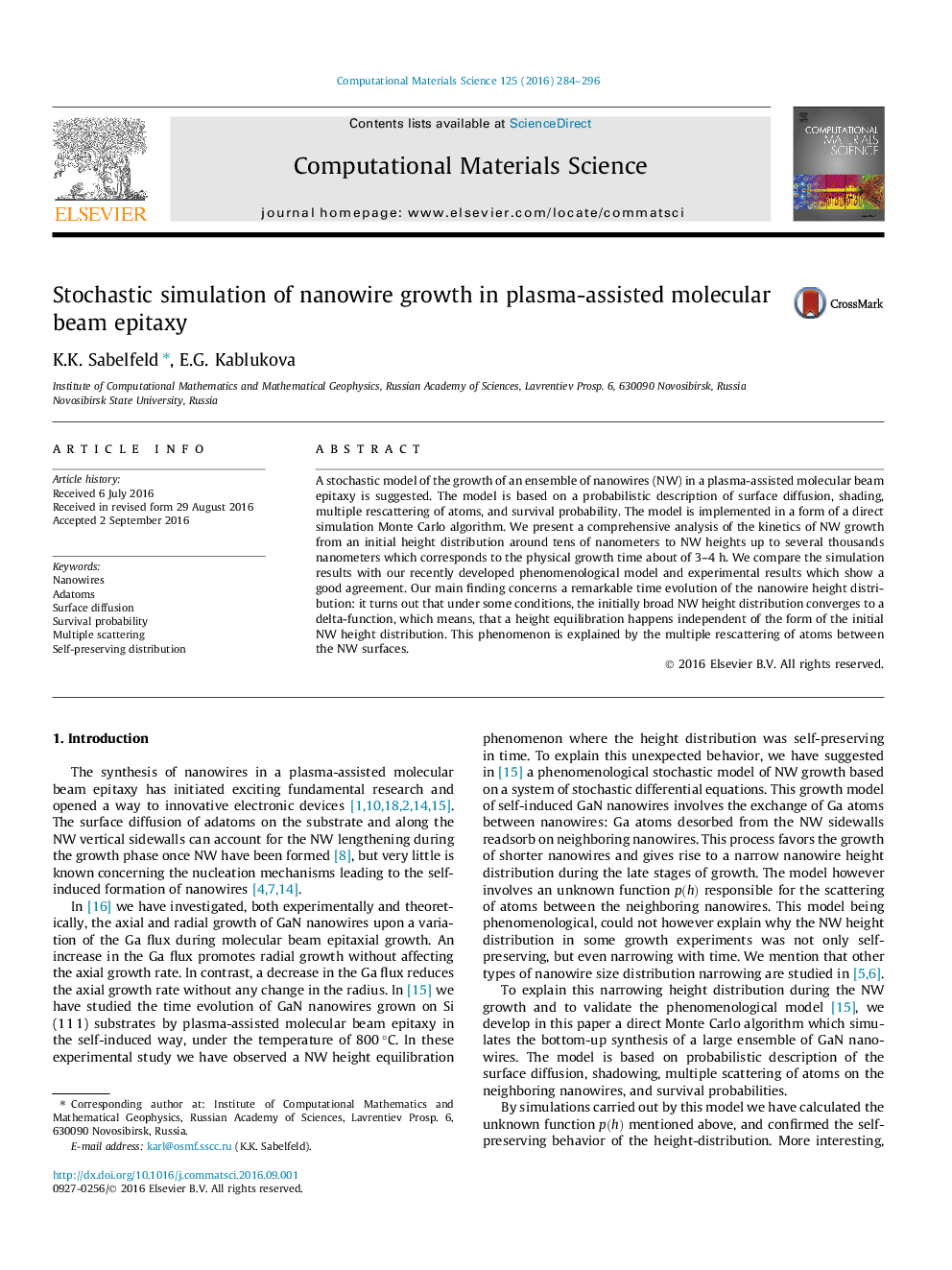| Article ID | Journal | Published Year | Pages | File Type |
|---|---|---|---|---|
| 7958553 | Computational Materials Science | 2016 | 13 Pages |
Abstract
A stochastic model of the growth of an ensemble of nanowires (NW) in a plasma-assisted molecular beam epitaxy is suggested. The model is based on a probabilistic description of surface diffusion, shading, multiple rescattering of atoms, and survival probability. The model is implemented in a form of a direct simulation Monte Carlo algorithm. We present a comprehensive analysis of the kinetics of NW growth from an initial height distribution around tens of nanometers to NW heights up to several thousands nanometers which corresponds to the physical growth time about of 3-4Â h. We compare the simulation results with our recently developed phenomenological model and experimental results which show a good agreement. Our main finding concerns a remarkable time evolution of the nanowire height distribution: it turns out that under some conditions, the initially broad NW height distribution converges to a delta-function, which means, that a height equilibration happens independent of the form of the initial NW height distribution. This phenomenon is explained by the multiple rescattering of atoms between the NW surfaces.
Related Topics
Physical Sciences and Engineering
Engineering
Computational Mechanics
Authors
K.K. Sabelfeld, E.G. Kablukova,
